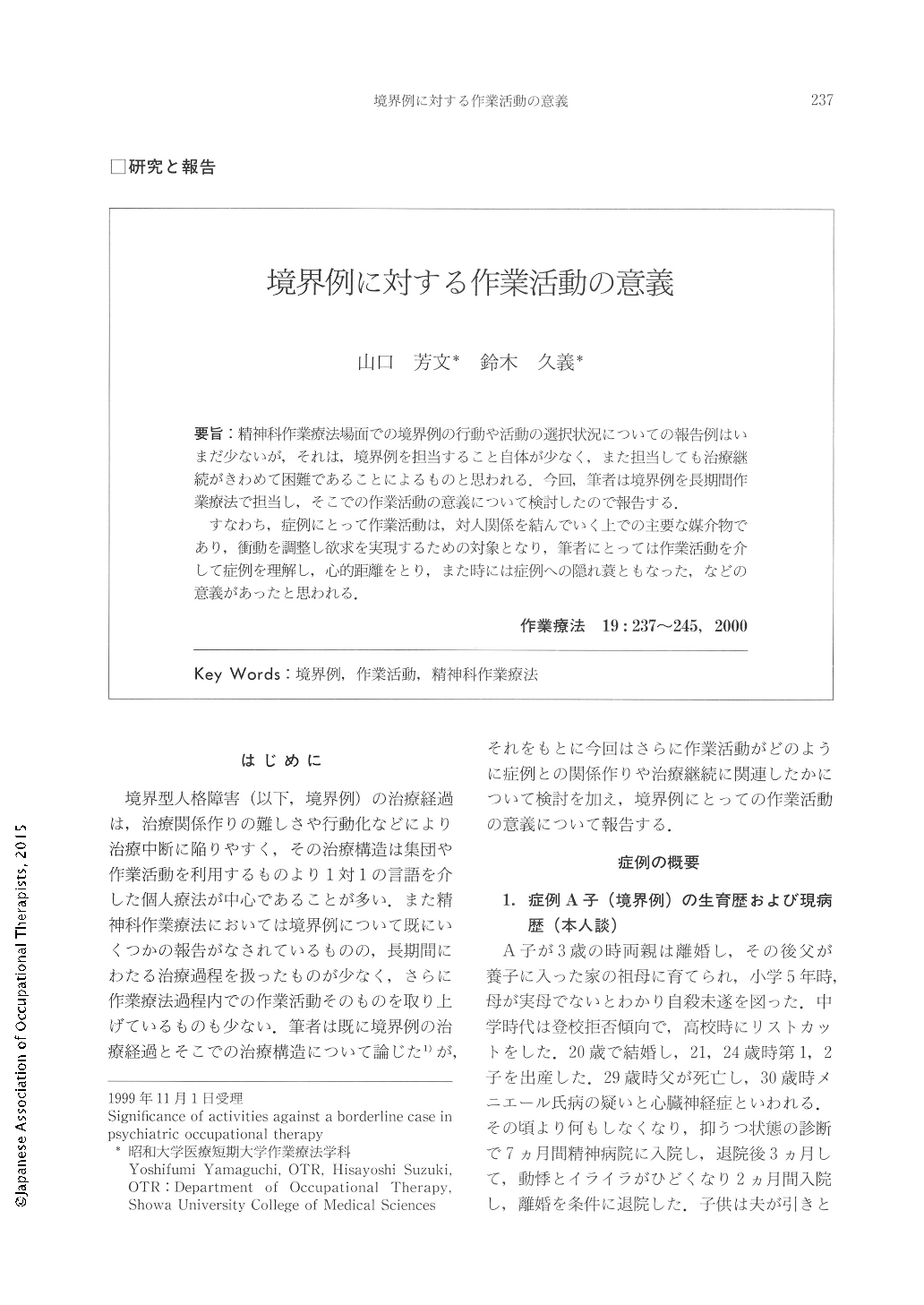Japanese
English
- 販売していません
- Abstract 文献概要
- 1ページ目 Look Inside
- 参考文献 Reference
- サイト内被引用 Cited by
要旨:精神科作業療法場面での境界例の行動や活動の選択状況についての報告例はいまだ少ないが,それは,境界例を担当すること自体が少なく,また担当しても治療継続がきわめて困難であることによるものと思われる.今回,筆者は境界例を長期間作業療法で担当し,そこでの作業活動の意義について検討したので報告する.
すなわち,症例にとって作業活動は,対人関係を結んでいく上での主要な媒介物であり,衝動を調整し欲求を実現するための対象となり,筆者にとっては作業活動を介して症例を理解し,心的距離をとり,また時には症例への隠れ蓑ともなった,などの意義があったと思われる.
There are relatively few medical-treatment reports about borderline cases in a psychiatric occupational therapy setting—for the following two reasons: a borderline case in which an occupational therapist is in charge is rare I also, it is difficult to continue medical treatment for a borderline case.
In this study, I investigated the relationship between a subject's behavior and the kind of activity in a borderline case. Within the occupational therapy environment, the person (our case study subject) preferred to draw pictures, write articles, and study. The kind of activity, however, changed, and/or varied, with each type of disease. Our subject did a great job of drawing a picture, which included an interesting message about the subject's earlier days.
After that, the subject enjoyed drawing freely and prolifically. When medical treatment concluded, the subject lost some eagerness for the activity. Significance of the activity: the activity became a principle mediator, or focal point, to the subject in question. An activity adjusted impulse for the subject was necessary for the subject to fully realize a need. As I evaluated the subject in question by employing an activity, I decided to create a mental distance from the subject, enabling the subject more comfort and freedom to work.

Copyright © 2000, Japanese Association of Occupational Therapists. All rights reserved.


